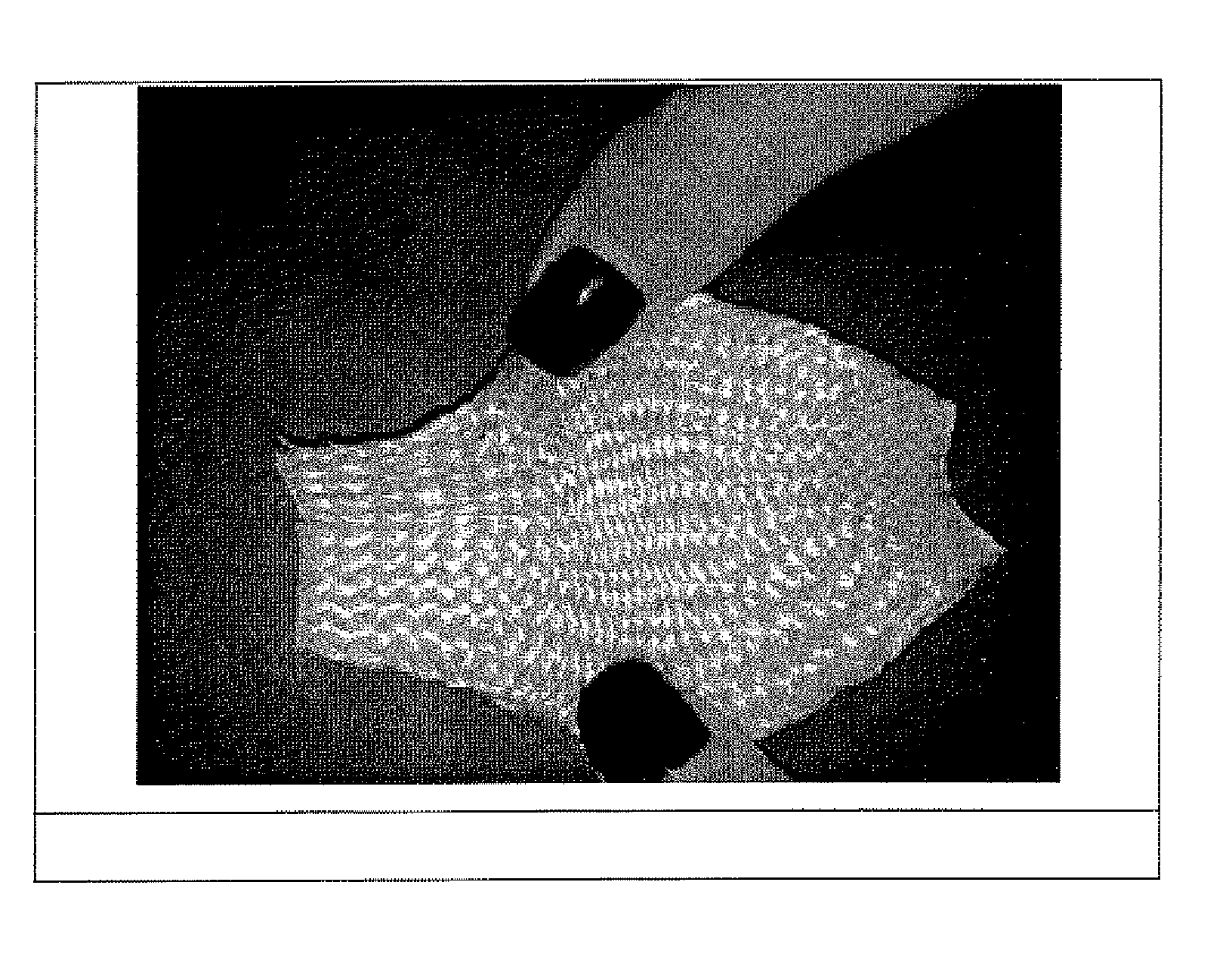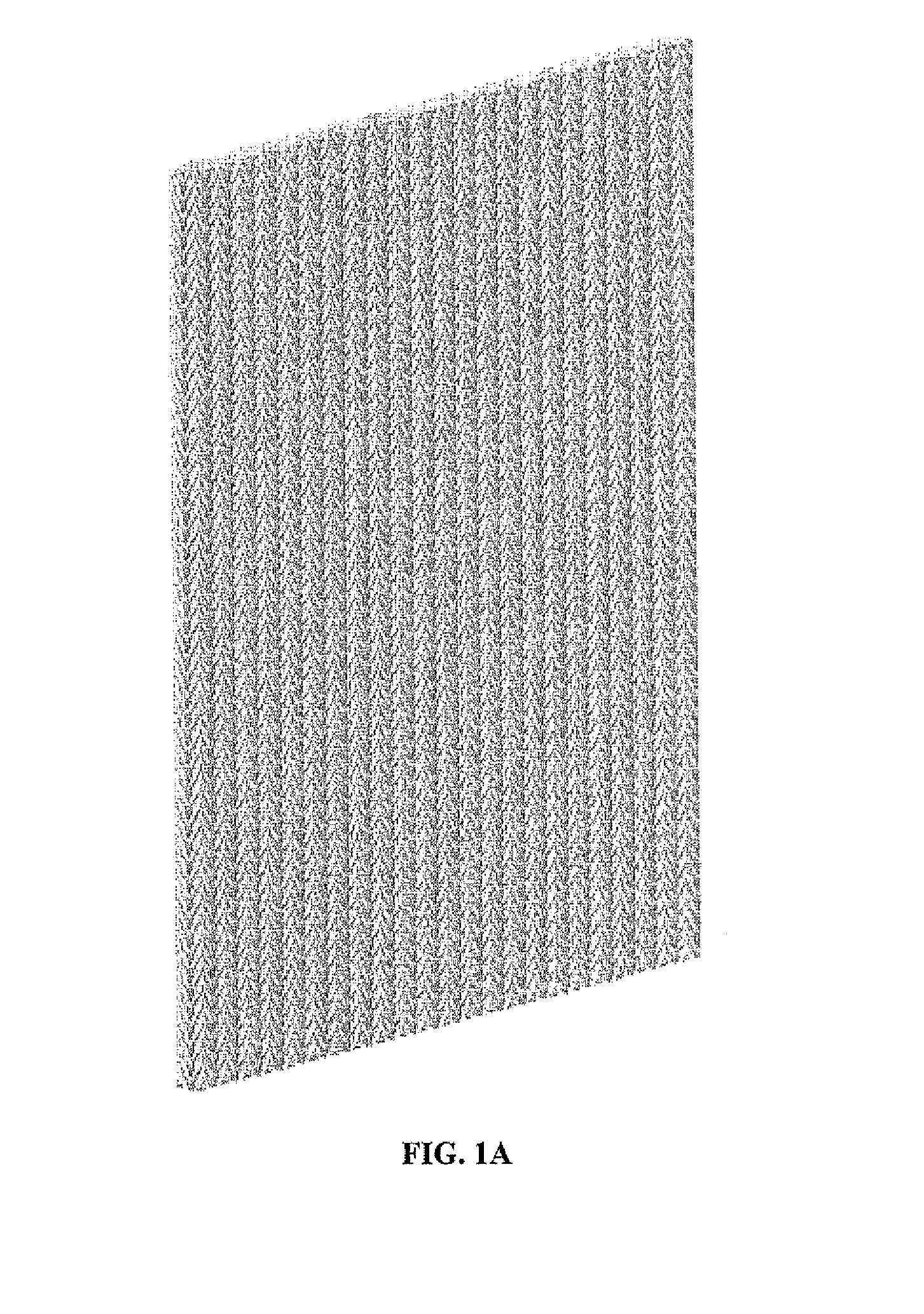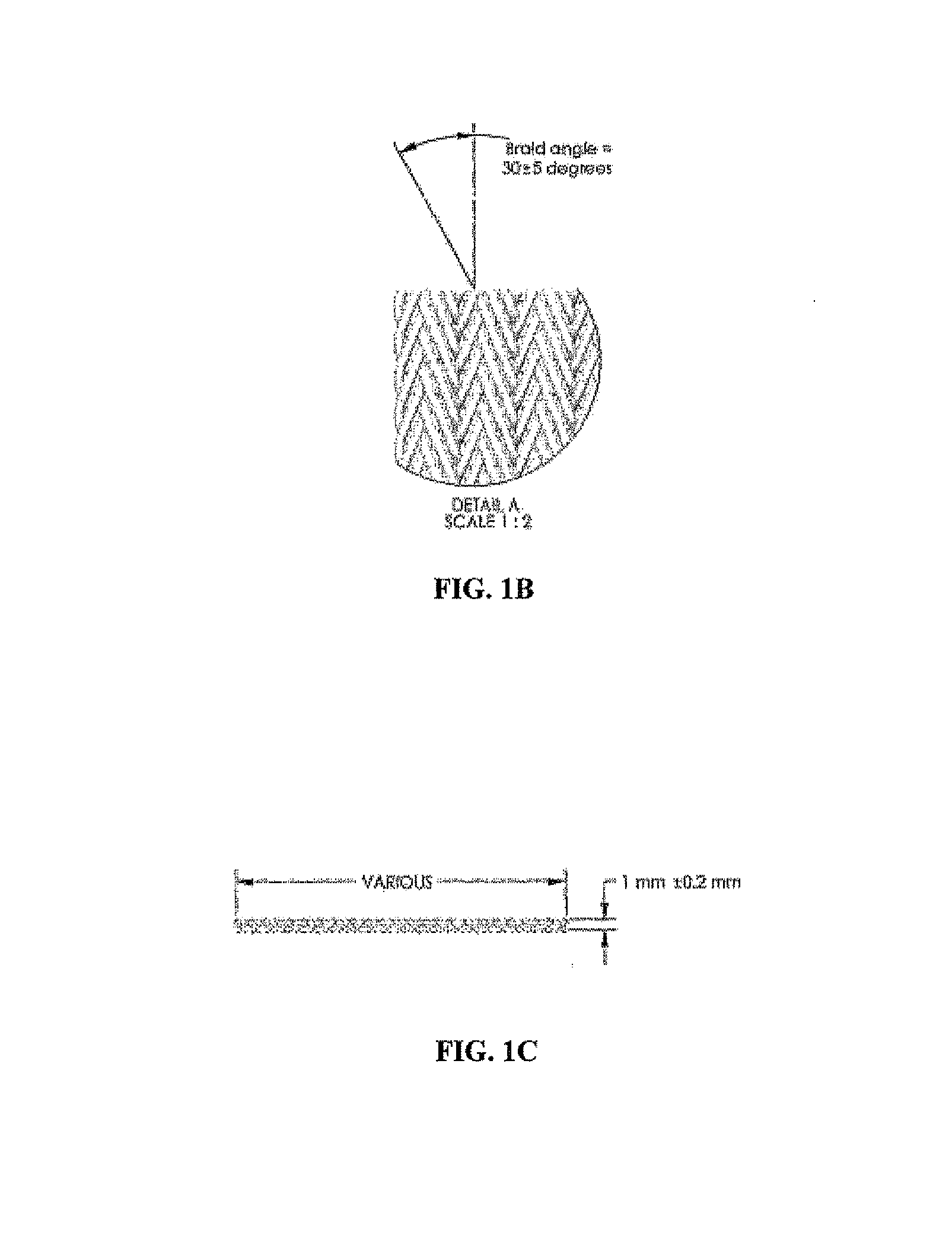Absorbable Synthetic Braided Matrix for Breast Reconstruction and Hernia Repair
a technology of synthetic braided matrix and breast reconstruction, which is applied in the field of implants for breast reconstruction or hernia repair, can solve the problems of restricted abdominal wall flexibility, more scarring, and non-physiological stretching capability of mesh implants
- Summary
- Abstract
- Description
- Claims
- Application Information
AI Technical Summary
Benefits of technology
Problems solved by technology
Method used
Image
Examples
Embodiment Construction
I. Three-Dimensional Braided Matrix
[0023]The implantable devices are formed from a three-dimensional braided matrix (see FIG. 1A-C). Suitable materials and methods for making the three-dimensional braided matrix are described in U.S. Publication No. 2011 / 0238179A1 to Laurencin, et al., the disclosure of which is incorporated herein in its entirety.
[0024]A polymeric fibrous structure that exhibits similar mechanical properties of human fibrous soft tissue is fabricated using standard 3-D braiding techniques. The mechanical properties of soft tissue and / or the fibrous structures can be determined by the placing a sample in a spring loaded clamp attached to the mechanical testing device and subjecting the sample to constant rate extension (5 mm / min) while measuring load and displacement and recording the resulting strain-stress curve.
[0025]In particularly useful embodiments, the polymeric braided structure exhibits a stiffness in the range of stiffness exhibited by fibrous soft tissue....
PUM
 Login to View More
Login to View More Abstract
Description
Claims
Application Information
 Login to View More
Login to View More - R&D
- Intellectual Property
- Life Sciences
- Materials
- Tech Scout
- Unparalleled Data Quality
- Higher Quality Content
- 60% Fewer Hallucinations
Browse by: Latest US Patents, China's latest patents, Technical Efficacy Thesaurus, Application Domain, Technology Topic, Popular Technical Reports.
© 2025 PatSnap. All rights reserved.Legal|Privacy policy|Modern Slavery Act Transparency Statement|Sitemap|About US| Contact US: help@patsnap.com



